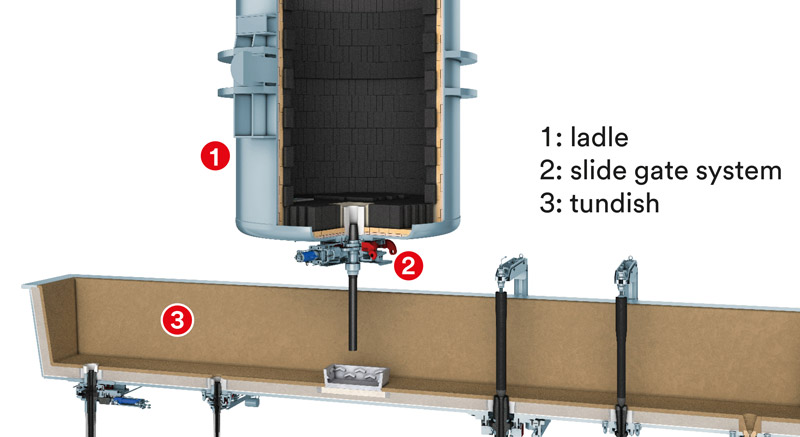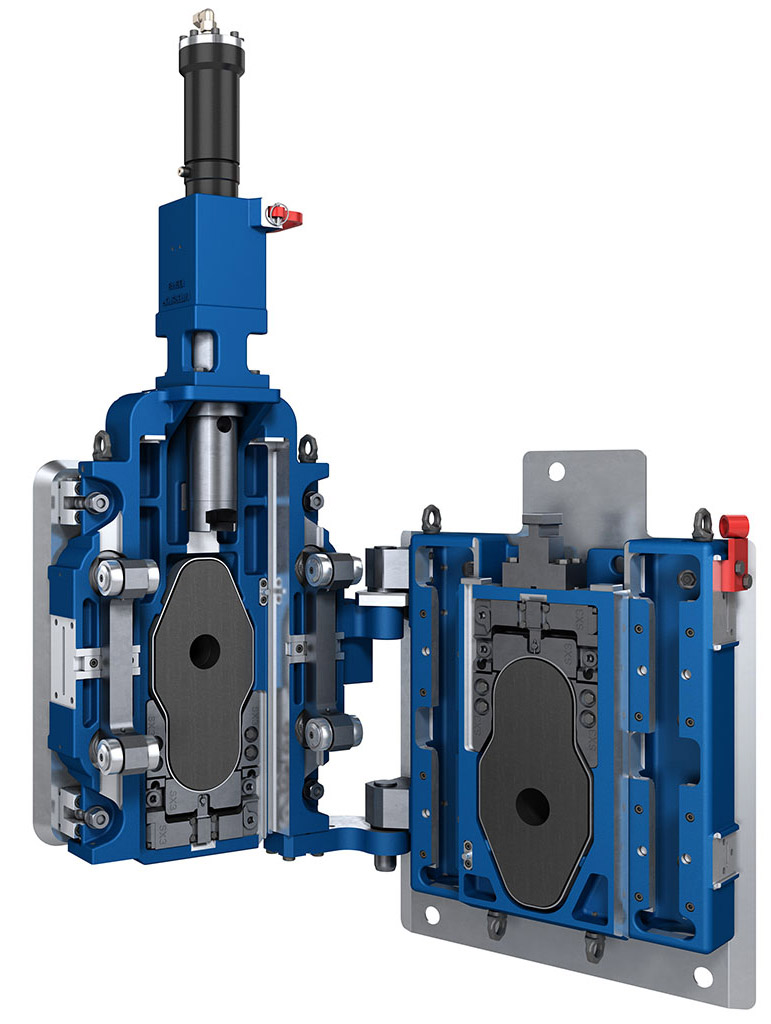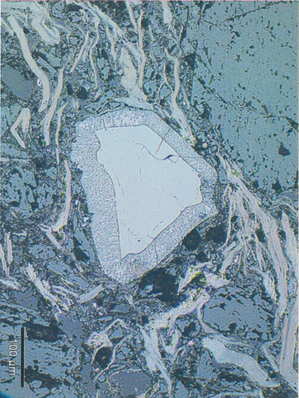Steel production: Things only get really exciting above 1,500 °C
Boron carbide proves its worth as an antioxidant for slide gate plates
Slide gate plates control the flow of steel
Slide gate systems were first used in steel ladles about 60 years ago. In conjunction with the continuous casting process, slide gate systems are widely used today. To regulate the flow of steel from the steel ladle into the tundish or from the tundish into the mould, the steel ladles are equipped with slide gate systems. This requires the highest demands on the refractory technologies used. "For the ladle and the slide gate plates, it is an enormous thermal shock when the liquid steel hits them at 1,550 to 1,700 °C," explains Dr. Andreas Rief, Slide Gate Technology Project Manager at RHI Magnesita. The plates with a bore used in the slide gates can be moved against each other and are used to control the flow during casting.

Complex systems of refractory technology
Slide gate systems are constructed from metal components and ceramic refractory components, with each solution tailored to the customer's specific requirements. In addition to high temperatures, slide gates plates are permanently exposed to mechanical loads of several tons of molten steel as well as chemical stresses. "These are highly complex and fascinating systems of refractory technology. Our challenge is to optimise the service life of all the components used and to align them with each other," Dr. Rief explains further.

Depending on steel quality, casting parameters and casting time, slide plates need to be replaced once a critical level of wear is reached. The overall life of the system is usually limited by the gate plates. The durability of the collector nozzle, as the connection between the slide gate system and the ladle shroud tube is usually designed to be identical to the plate durability. "It's no use if the slide plate is still intact but the inner nozzle needs to be replaced, for example - the wear concept is not exclusively about the maximum possible performance, but also about the best individual fit," says Dr. Rief.
Boron carbide serves as effective oxidation protection
Corrosion due to chemical reactions is one of the main causes of wear in slide gate plates, along with mechanical erosion. Processes in the steel ladle produce so-called foreign oxides, which can react with the oxides of the plate material on contact. Typical corrosion phenomena include widening of the borehole and loss of material on the functional surface of the plate. The chemical composition of slide gate plates, which are typically made of alumina, usually have a decisive influence on service life. To protect the carbon contained from oxidation, various antioxidants with a high affinity for oxygen are added. Boron carbide B4C serves as a very effective antioxidant and is usually added in small amounts of 0.5 to 1.0 %.

There is no substitute for reliability
Due to its properties, boron carbide (B4C) is considered as extremely hard and wear-resistant material in technical ceramics. However, these properties are not relevant for refractory products, where B4C is used as a powder additive. "The reliability of the slide gate plates is an area that is safety-relevant for the entire continuous casting process. The reliability of the refractory systems is therefore a top priority for our customers. The decisive factors here are quality and also reliable raw material availability," Dr. Rief continues. RHI Magnesita has a long-standing and successful partnership with 3M as supplier of the boron carbide.
RHI Magnesita: A leader in refractory technologies
The history of RHI Magnesita goes back almost 200 years with the foundation of Didier in Germany. Together with the Veitscher Magnesitwerke, founded in Austria over 120 years ago, these laid the foundation for the world market leader in refractories, with locations worldwide and innovative, reliable products and services. Their refractory products are used in industrial high-temperature processes all over the world - not only in steel production but also in the cement, lime, non-ferrous metals, glass, energy, environmental and chemical industries. The systems remain strong and stable under the most adverse conditions and at temperatures of 1,200 °C and far above. They contain materials safe and protect firing and furnace systems from thermal, mechanical and chemical stress. Or as the company aptly puts it with its own vision: "We take innovation to 1,200 °C and beyond."
Learn more about the capabilities of Boron carbide.

